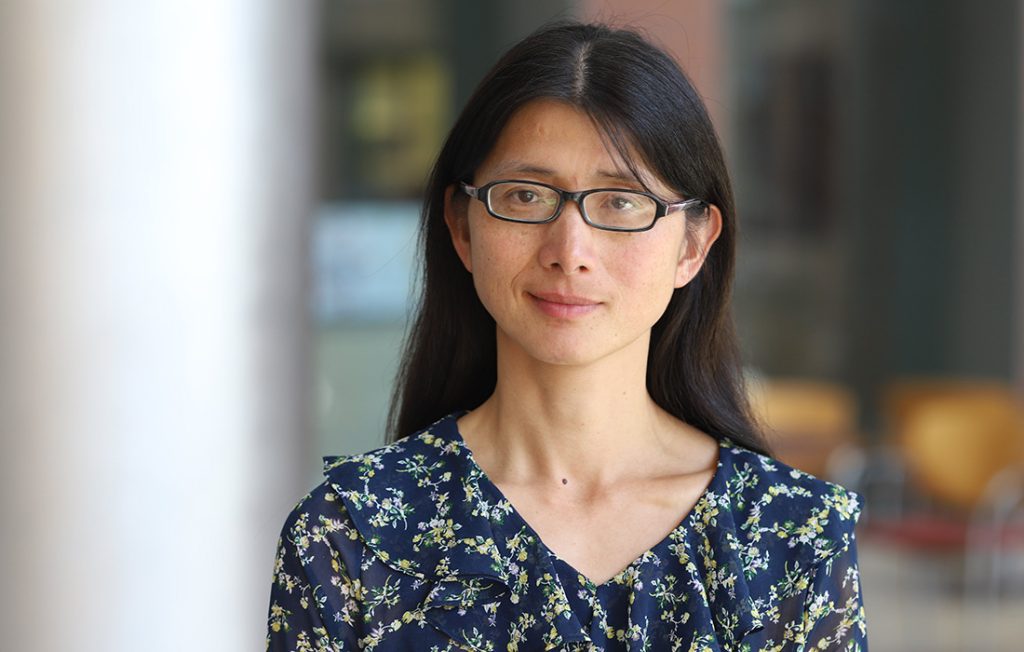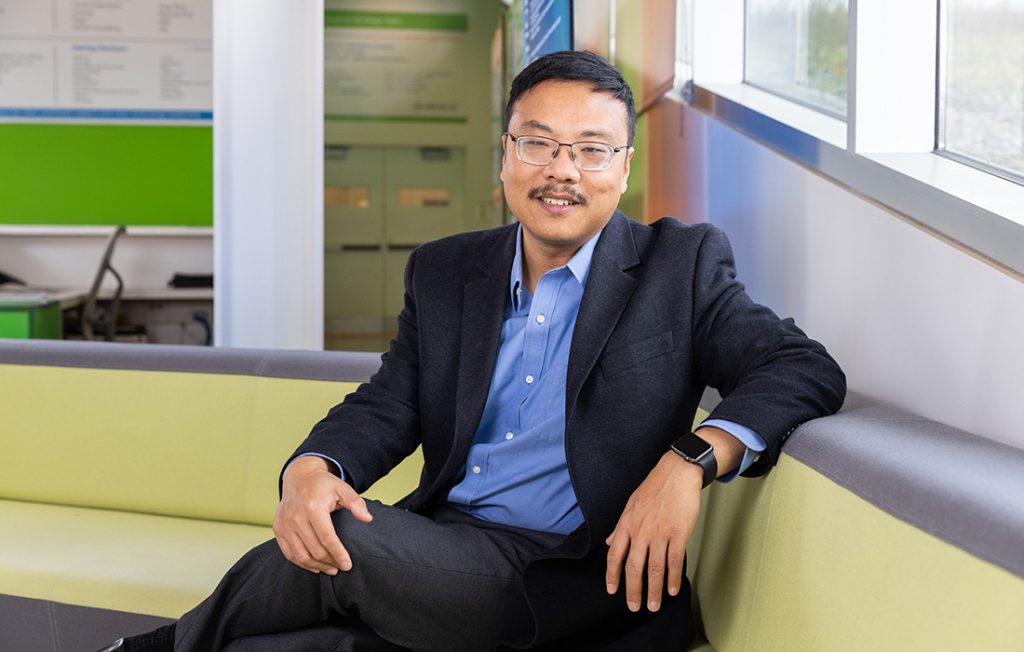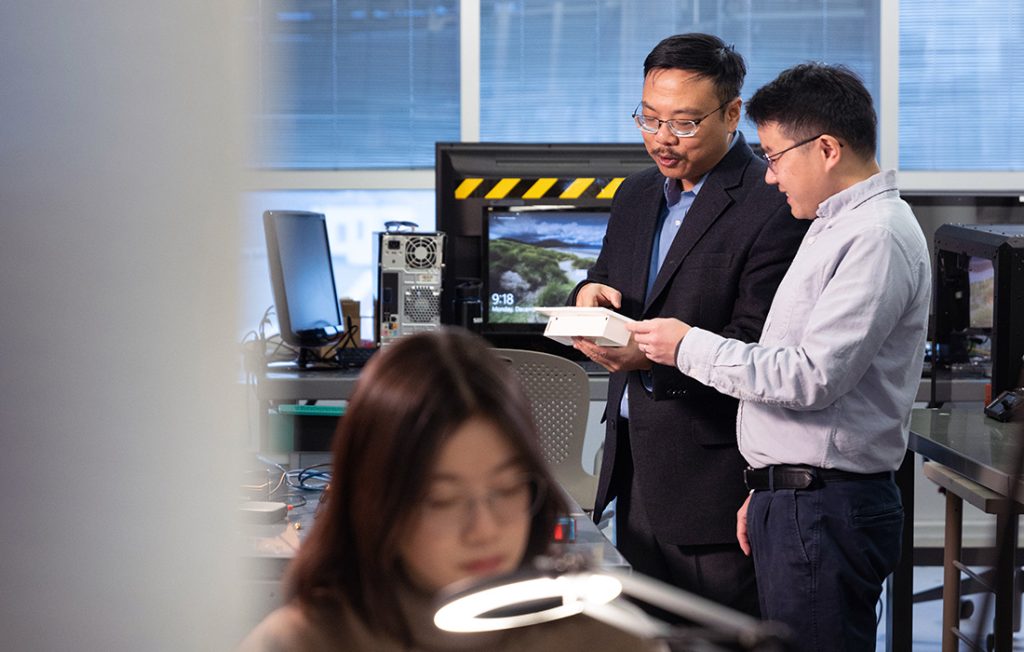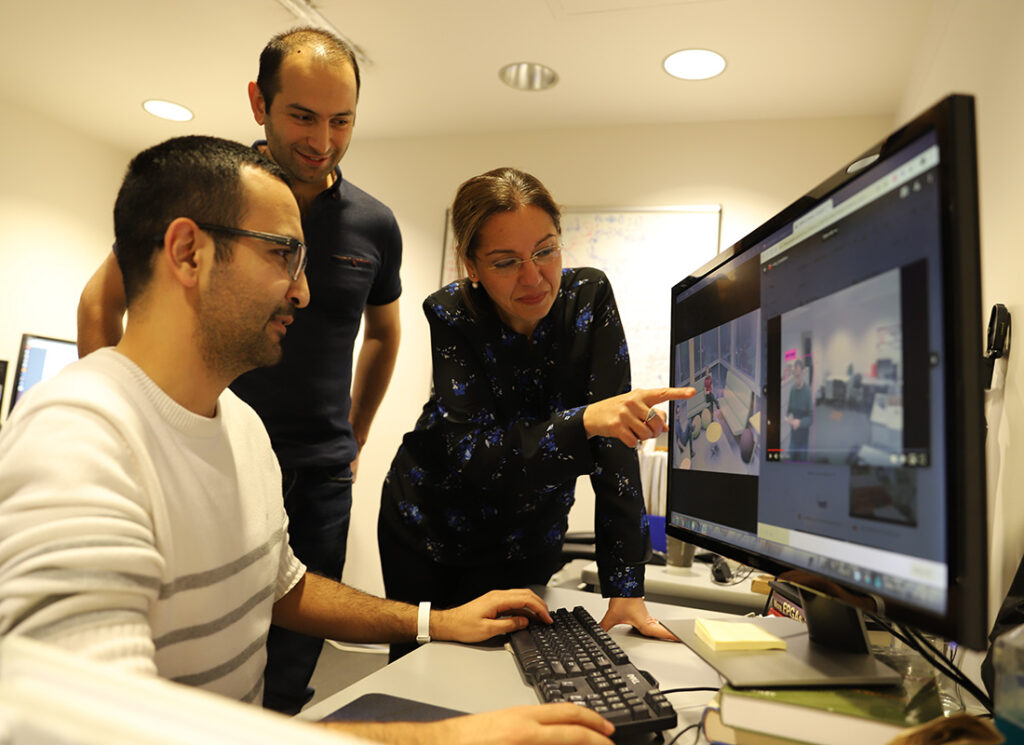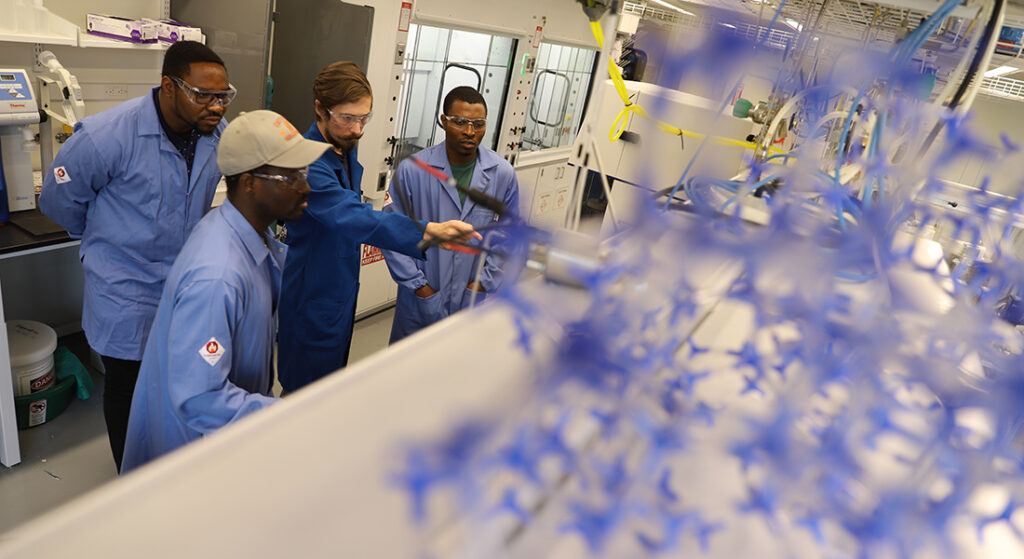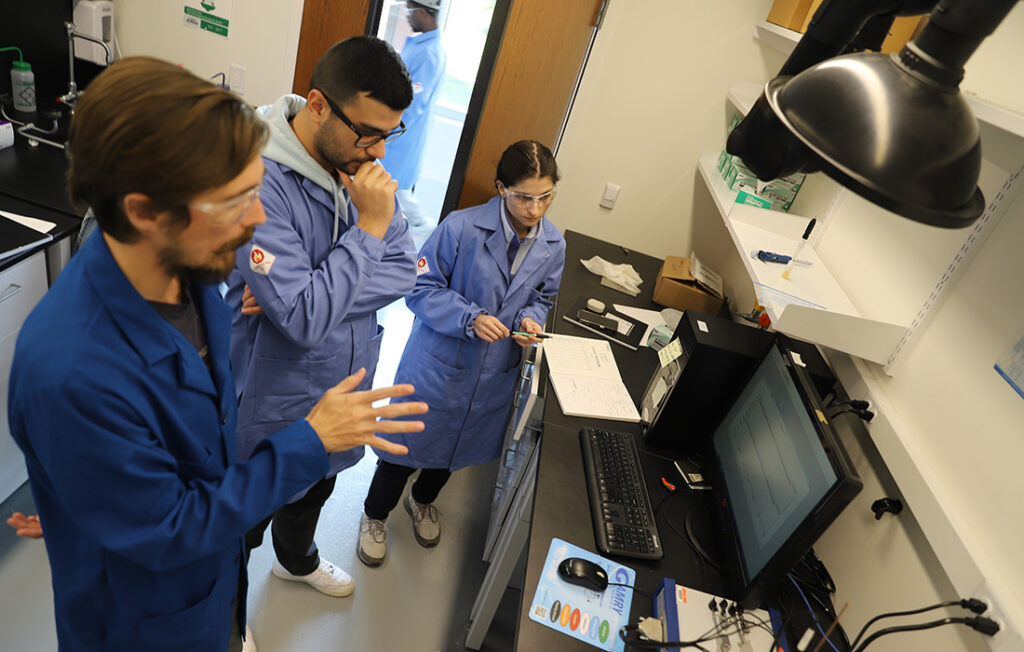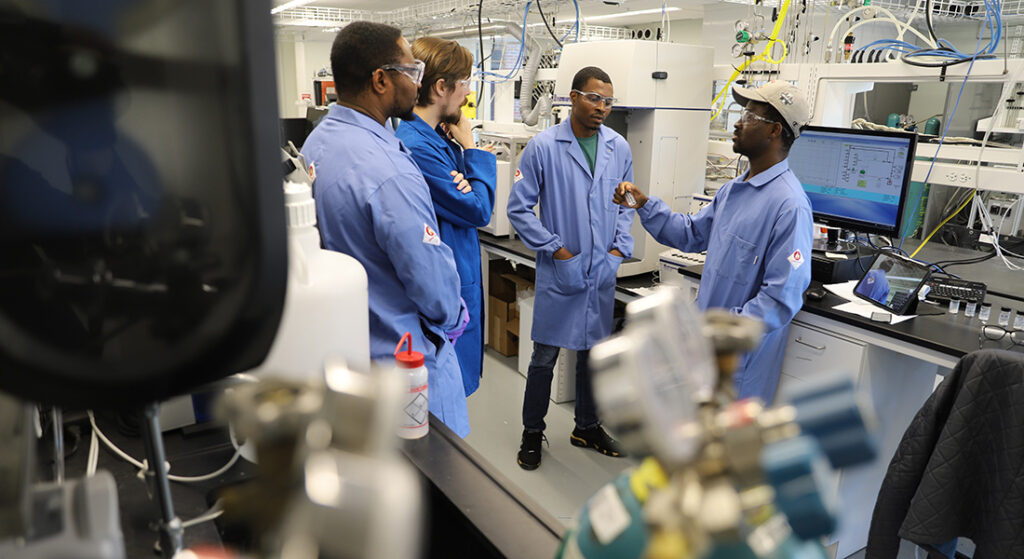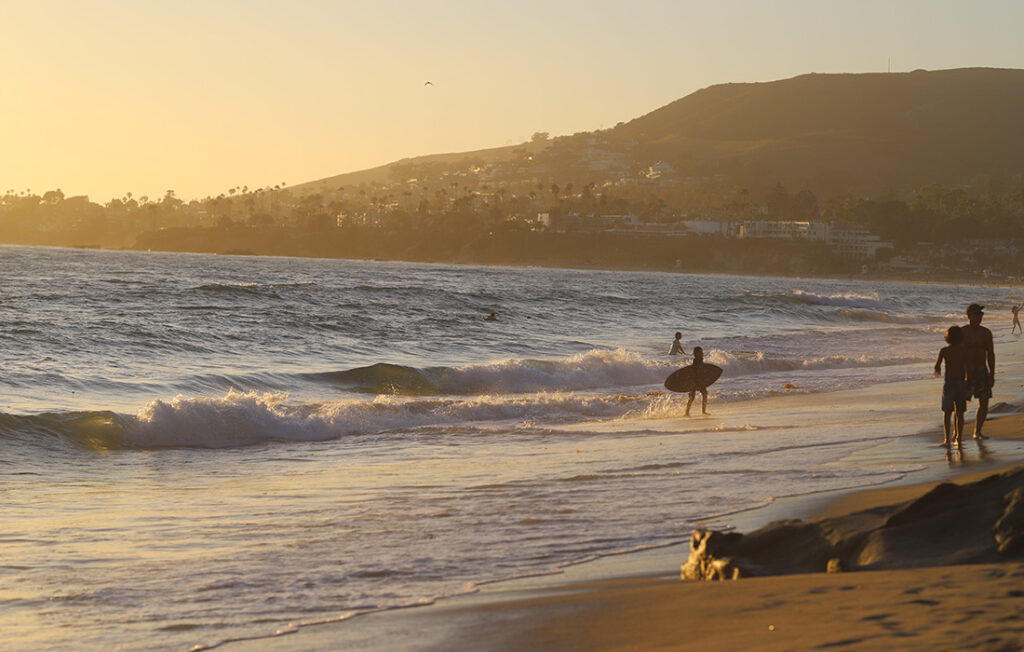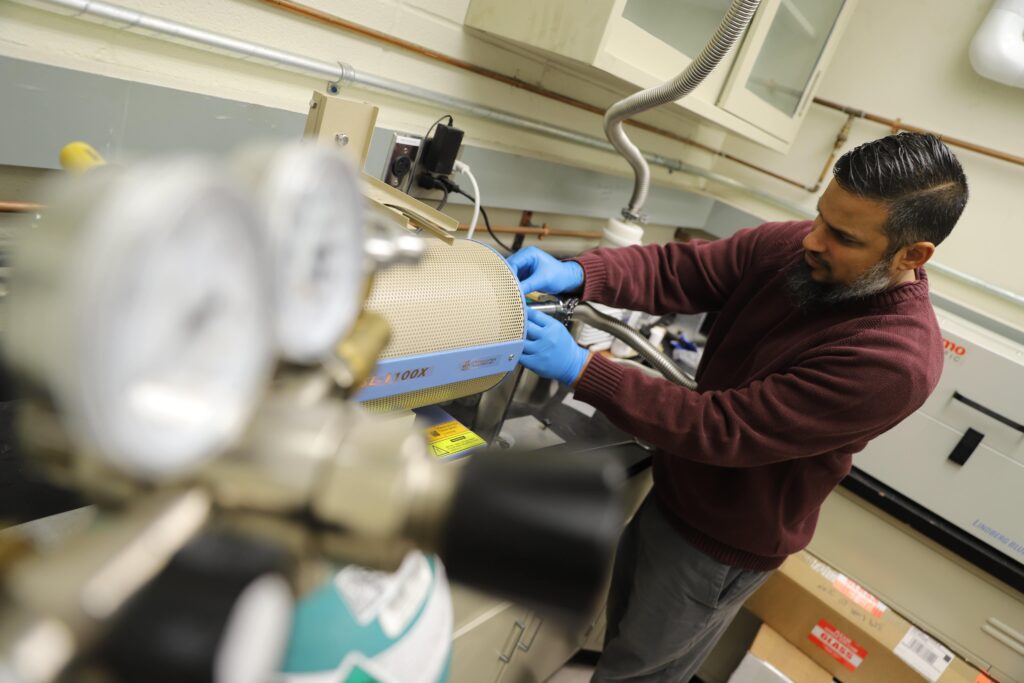Degrees:
- Ph.D. Virginia Commonwealth University, 2006
- M.S. Shanghai Institute of Optics and Fine Mechanics, Chinese Academy of Science, 2003
- B.S. Hefei University of Technology, Hefei, 1999
Center Affiliation: NSF IUCRC Center for Solid-State Electric Power Storage (CEPS)
Research Interests:
- Batteries
- Solar cells
- Micro/ nano fabrication
- Biomedical sensors
- Precision agriculture
Dr. Quinn Qiao is a professor in the department of mechanical and aerospace engineering and an affiliate professor in the department of electrical engineering and computer science at Syracuse University. He is the site director for the NSF Industry University Cooperative Research Center (IUCRC) for Solid State Electric Power Storage (CEPS), and SU campus lead for NSF Engine project. Before moving to Syracuse University, he was the Harold C. Hohbach Professor of Electrical Engineering at South Dakota State University and the Director of the U.S. Economic Development Center at the University. He has also been working on batteries (lithium ion, lithium metal, solid state, etc.), solar cells, and biosensors. He has published more than 300 peer reviewed papers in leading journals including Science, Nature Communications, Energy and Environmental Science, Journal of the American Chemical Society, Advanced Materials, Advanced Energy Materials, Advanced Functional Materials, Nanoscale, Joule, ACS Energy Letters, Nano Energy, IEEE Sensors Journal, IEEE Transactions on Electron Devices, IEEE Journal of Photovoltaics, IEEE Electron Device Letters, etc. He has more than 16,200 citations on Google Scholar and a H-index of 69.
Honors:
- 2019 Commercialization Award, SDSU
- 2016 Faculty Excellence for Global Engagement in International Research, SDSU
- 2015 Distinguished Researcher of the Year, SDSU
- 2014 F O Butler Award for Excellence in Research, SDSU
- 2014 Visiting Professorship from Hefei University of Technology, China.
- 2013 Best Poster Award at 3rd International Conference on Nanotek and Expo, Las Vegas, NV, USA.
- 2012 Best Paper Award, Inter-Continental Advanced Materials for Photonics (I-CAMP) Summer School on renewable and sustainable energy
- 2012 3M Non-tenured Faculty Award
- 2012 Young Investigator Award
- 2010 NSF CAREER Award
- 2009 Bergmann Memorial Research Award from US-Israel Binational Science Foundation
- 2009 Doctor New Investigator Award from American Chemical Society Petroleum Research Fund
- 2006 Chinese Government Award for Outstanding Self-financed Student Abroad, China Scholarship Council (CSC)
- 2006 ASME Solar Energy Division Graduate Student Award
Select Publications:
Sung-Doo Baek, Wenhao Shao, Weijie Feng, Yuanhao Tang, Yoon Ho Lee, James Loy, William B Gunnarsson, Hanjun Yang, Yuchen Zhang, M Bilal Faheem, Poojan Indrajeet Kaswekar, Harindi R Atapattu, Jiajun Qin, Aidan H Coffey, Jee Yung Park, Seok Joo Yang, Yu-Ting Yang, Chenhui Zhu, Kang Wang, Kenneth R Graham, Feng Gao, Quinn Qiao, L Jay Guo, Barry P Rand, Letian Dou, Grain engineering for efficient near-infrared perovskite light-emitting diodes, Nature Communications volume 15, Article number: 10760 (2024).
Zeyu Chen, Fan Wu, Rajesh Pathak, Lu Chen, Jinxin Bian, Sally Mabrouk, Jeffrey W Elam, Quinn Qiao, In Situ Exploration of Dipole Field Effects on Weak Hysteresis in 3D/2D Perovskites, Adv. Electron. Mater. 10, 2400107, 2024.
Tarif Anam, Md Tawabur Rahman, Liang Dong, Quinn Qiao, Low-Temperature Detection of Carbon Monoxide With Enhanced Sensitivity Using Ag-Loaded ZnO/rGO-Modeling, Simulation, and Validation, IEEE Sensors Journal, 18827 – 18834, 24 (12), 2024.
Hanjie Lin, Shuya Li, Yuchen Zhang, Chun Chu, Walker MacSwain, Robert W Meulenberg, Quinn Qiao, Dong Zhao, Weiwei Zheng, Epitaxial Growth of Lead-Free Double Perovskite Shell for CsPbX3/Cs2SnX6 (X = Cl, Br, and I) Core/Shell Perovskite Nanocrystals with Enhanced Photoelectric Properties and Stability, Adv. Funct. Mater. 2024, 34, 2309480.
Jinyu Zhao, Rajesh Pathak, Zhenxin Zhao, Xu Chen, Madan Bahadur Saud, Hansheng Li, Fan Wu, Quinn Qiao, Jeffrey W Elam, Xiaomin Wang, Advanced nano-bifunctional electrocatalyst in Li-air batteries for high Coulombic efficiency, Green Chem., 2023,25, 10182-10208.
Quasi‐homojunction organic nonfullerene photovoltaics featuring fundamentals distinct from bulk heterojunctions, Yifan Wang, Michael B Price, Raja Sekhar Bobba, Heng Lu, Jingwei Xue, Yilin Wang, Mengyang Li, Aleksandra Ilina, Paul A Hume, Boyu Jia, Tengfei Li, Yuchen Zhang, Nathaniel JLK Davis, Zheng Tang, Wei Ma, Quinn Qiao, Justin M Hodgkiss, Xiaowei Zhan, Advanced Materials 34 (50), 2206717, 2022.
Yifan Wang, Michael B Price, Raja Sekhar Bobba, Heng Lu, Jingwei Xue, Yilin Wang, Mengyang Li, Aleksandra Ilina, Paul A Hume, Boyu Jia, Tengfei Li, Yuchen Zhang, Nathaniel JLK Davis, Zheng Tang, Wei Ma, Quinn Qiao, Justin M Hodgkiss, Xiaowei Zhan, Simultaneously enhancing exciton/charge transport in organic solar cells by an organoboron additive, Advanced Materials 34 (42), 2205926, 2022.
M Bilal Faheem, Bilawal Khan, Jaweria Z Hashmi, Abiral Baniya, WS Subhani, Raja Sekhar Bobba, Abdullah Yildiz, Quinn Qiao, Insights from scalable fabrication to operational stability and industrial opportunities for perovskite solar cells and modules, Cell Reports Physical Science 3 (4), 2022
Rajesh Pathak, Ke Chen, Fan Wu, Anil U Mane, Ratnakumar V Bugga, Jeffrey W Elam, Quinn Qiao, Yue Zhou, Advanced strategies for the development of porous carbon as a Li host/current collector for lithium metal batteries, Energy Storage Materials 41, 448-465, 2021
Wei He, Ke Chen, Rajesh Pathak, Matthew Hummel, Khan Mamun Reza, Nabin Ghimire, Jyotshna Pokharel, Shun Lu, Zhengrong Gu, Qiquan Qiao, Yue Zhou, High-mass-loading Sn-based anode boosted by pseudocapacitance for long-life sodium-ion batteries, Chemical Engineering Journal 414, 128638, 2021.
Zhenxin Zhao, Zonglin Yi, Huijun Li, Rajesh Pathak, Xiaoqin Cheng, Junliang Zhou, Xiaomin Wang, Qiquan Qiao, Understanding the modulation effect and surface chemistry in a heteroatom incorporated graphene-like matrix toward high-rate lithium–sulfur batteries, Nanoscale 13 (35), 14777-14784, 2021
Yi Hou, Erkan Aydin, Michele De Bastiani, Chuanxiao Xiao, Furkan H Isikgor, Ding-Jiang Xue, Bin Chen, Hao Chen, Behzad Bahrami, Ashraful H Chowdhury, Andrew Johnston, Se-Woong Baek, Ziru Huang, Mingyang Wei, Yitong Dong, Joel Troughton, Rawan Jalmood, Alessandro J Mirabelli, Thomas G Allen, Emmanuel Van Kerschaver, Makhsud I Saidaminov, Derya Baran, Qiquan Qiao, Kai Zhu, Stefaan De Wolf, Edward H Sargent, Efficient tandem solar cells with solution-processed perovskite on textured crystalline silicon, Science, 367 (2020) 1135-1140.
Rajesh Pathak, Ke Chen, Ashim Gurung, Khan Mamun Reza, Behzad Bahrami, Jyotshna Pokharel, Abiral Baniya, Wei He, Fan Wu, Yue Zhou, Kang Xu, Qiquan Quinn Qiao, Fluorinated hybrid solid-electrolyte-interphase for dendrite-free lithium deposition, Nature Communications, 11 (2020) 1-10.
Yinhua Lv, Ruihan Yuan, Bing Cai, Behzad Bahrami, Ashraful Haider Chowdhury, Chi Yang, Yihui Wu, Qiquan Qiao, Shengzhong Liu, Wen-Hua Zhang, Angew. Chem. Int. Ed., (2020). doi:10.1002/anie.201915928
Yilei Wu, Sebastian Schneider, Christopher Walter, Ashraful Haider Chowdhury, Behzad Bahrami, Hung-Chin Wu, Qiquan Qiao, Michael F Toney, Zhenan Bao, Fine-Tuning Semiconducting Polymer Self-Aggregation and Crystallinity Enables Optimal Morphology and High-Performance Printed All-Polymer Solar Cells, J. Am. Chem. Soc., 2020, 142, 1, 392-406.
Md Ashiqur Rahman Laskar, Wenqin Luo, Nabin Ghimire, Ashraful Haider Chowdhury, Behzad Bahrami, Ashim Gurung, Khan Mamun Reza, Rajesh Pathak, Raja Sekhar Bobba, Buddhi Sagar Lamsal, Ke Chen, Md Tawabur Rahman, Sheikh Ifatur Rahman, Khalid Emshadi, Tingting Xu, Mao Liang, Wen‐Hua Zhang, Qiquan Qiao, Phenylhydrazinium Iodide for Surface Passivation and Defects Suppression in Perovskite Solar Cell, Advanced Functional Materials, 2020, 2000778. https://doi.org/10.1002/adfm.202000778
Rajesh Pathak, Ke Chen, Ashim Gurung, Khan Mamun Reza, Behzad Bahrami, Fan Wu, Ashraf Chaudhary, Nabin Ghimire, Bin Zhou, Wen‐Hua Zhang, Yue Zhou, Qiquan Qiao, Ultrathin Bilayer of Graphite/SiO2 as Solid Interface for Reviving Li Metal Anode, Advanced Energy Materials, 9 (2019) 1901486.
Fan Wu, Rajesh Pathak, Ke Chen, Guiqiang Wang, Behzad Bahrami, Wen-Hua Zhang, Qiquan Qiao, Inverted Current-Voltage Hysteresis in Perovskite Solar Cells, ACS Energy Letters, 3(10):2457-2460, 2018.
Hytham Elbohy, Behzad Bahrami, Sally Mabrouk, Khan Mamun Reza, Ashim Gurung, Rajesh Pathak, Mao Liang, Qiquan Qiao, and Kai Zhu. Tuning Hole Transport Layer Using Urea for High‐Performance Perovskite Solar Cells. Advanced Functional Materials, 2019, 29, 1806740. https://doi.org/10.1002/adfm.201806740.
Evan T Vickers, Thomas A Graham, Ashraful H Chowdhury, Behzad Bahrami, Benjamin W Dreskin, Sarah Lindley, Sara Bonabi Naghadeh, Qiquan Qiao, Jin Z Zhang, Improving charge carrier delocalization in perovskite quantum dots by surface passivation with conductive aromatic ligands, ACS Energy Letters, 3 (2018) 2931-2939.
Ashim Gurung, Qiquan Qiao, Solar Charging Batteries: Advances, Challenges, and Opportunities, Joule, 2 (7), 1217-1230, 2018.
Md Faisal Kabir, Md Tawabur Rahman, Ashim Gurung, and Qiquan Qiao, Electrochemical Phosphate Sensors using Silver Nanowires Treated Screen Printed Electrodes, IEEE Sensors Journal, 18 (9), 3480-3485, 2018.
Upendra Neupane, Behzad Bahrami, Matt Biesecker, Mahdi Farrokh Baroughi, and Qiquan Qiao, Kinetic Monte Carlo Modeling on Organic Solar Cells: Domain Size, Donor-Acceptor Ratio and Thickness, Nano Energy, 35, 128-137, 2017.
Roya Naderi, Ashim Gurung, Zhengping Zhou, Geetha Varnekar, Ke Chen, Jiantao Zai, Xuefeng Qian, Qiquan Qiao, Activation of passive nano-fillers in composite polymer electrolyte for higher performance lithium ion batteries, Advanced Sustainable Systems, 1, 8, 1700043, 2017.
Ashim Gurung, Ke Chen, Geetha Varnekar, Reza Khan, Salem Saad Abdulkarim, Rajesh Pathak, Roya Naderi, Qiquan Qiao, Highly Efficient Perovskite Solar Cell Photo-Charging of Lithium Ion Battery using DC-DC Booster, Advanced Energy Materials, 1602105, 2017.
Mukesh Kumar, Ashish Dubey, Nirmal Adhikari, Swaminathan Venkatesan and Qiquan Qiao, Strategic review of secondary phases, defects and defect-complexes in kesterite CZTS-Se solar cells, Energy & Environmental Science, 8, 3134-3159, 2015.
Qi Wang, Iain W. H. Oswald, Xiaolong Yang, Guijiang Zhou, Huiping Jia, , Qiquan Qiao, Yonghua Chen, Jason Hoshikawa-Halbert, Bruce E. Gnade, A Non-Doped Phosphorescent Organic Light-Emitting Device with Above 31% External Quantum Efficiency, Advanced Materials, 26: 8107–8113, 2014, doi: 10.1002/adma.201402947 .
Jing Li, Min Yan, Yu Xie, and Qiquan Qiao, Linker Effects on Optoelectronic Properties of Alternate Donor-Acceptor Conjugated Polymers. Energy & Environmental Science, 4 (10), 4276-4283, 2011.
Mahbube Siddiki, Jing Li, David Galipeau, and Qiquan Qiao*, A review of polymer multijunction solar cells (invited review, among top ten most-read paper in July 2010). Energy & Environmental Science, 3(7): p. 867-883, 2010.
Prakash Joshi, Yu Xie, Mike Ropp, David Galipeau, Shelia Bailey, and Qiquan Qiao. Dye-sensitized Solar Cells based on Low Cost Nanoscale Carbon/TiO2 Composite Counter Electrode. Energy & Environmental Science (invited and cover article, among top ten most-read paper in August 2010), 2, 426 – 429, 2009.
Prasad Taranekar, Qiquan Qiao, Hui Jiang, Ion Ghiviriga, Kirk S. Schanze, and John R. Reynolds, Hyperbranched Conjugated Polyelectrolyte Bilayers for Solar-Cell Applications, Journal of the American Chemical Society (communication), 129(29), pp 8958 – 8959, 2007.

